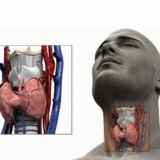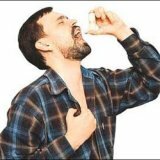The first symptoms of diabetes, treatment

It's not a secret that the world has a big tendency to diabetes, because of which thousands of people around the world are suffering. Every year in the world the percentage of diabetes mellitus diseases increases, and the problem turns into a global one, which has social significance.
Signs of the disease.
So, as the treatment of diabetes is not now completely effective, which can treat any stage of diabetes, then preventing the disease is a more important factor. Prevention of diabetes, the beginning of his treatment in the very first stages - this is the key to the success of the fight against this terrible disease. First of all, when solving the problem of preventing diabetes, a strict diet is observed, which can play an important role in relation to two factors: first, it prevents the intake of excessive sugar in the blood, which is the cause of the disease, and secondly, the diet contributesMinimizing the risk of obesity, which also aggravates the metabolism and, as a consequence, diabetes.
The problem of diabetes exists practically at any age, as in children, and in adults, and the elderly. It should be noted that diabetes mellitus is a acquired illness that can be earned throughout life if there is a lack of proper nutrition, stress, sedentary lifestyle, and congenital disease, which can already be at the time of the birth of the child. There is also a chance that a child whose parents have diabetes mellitus will be addicted to the disease with this ailment.
The first symptoms of diabetes mellitus, which can still be treated without special medicines for lowering blood sugar, are:
- Rapid urination, which in turn causes more thirst. The amount of urine per day can reach more than six liters, therefore, the amount of water drunk is proportional.
- Permanent thirst, even without the use of special products that can cause it. Thirst is not quenched, even after a large amount of liquids drunk and after a few days.
- A constant feeling of hunger, no matter how much food is eaten. The feeling of hunger does not pass even directly with food and after eating.
- A very frequent symptom of diabetes is a significant weight loss, which occurs due to the splitting of fats and proteins instead of glucose, but this symptom is very rare or weakly expressed.
- It is also possible to have a slight itch on the skin, a variety of rashes on the body, weakness of the body, excessive dryness of the mucous membranes. Sometimes diabetes is very difficult to determine due to a number of other diseases that can be present in the body and have similar symptoms( allergy, infectious diseases).Types of diabetes mellitus.
There are basically two types of diabetes mellitus, the treatment of which also varies: the first and the second type. What are they different from each other? In order to distinguish between these two types of disease, one needs to understand a little about how carbohydrates are exchanged in the body. Glucose is the main carbohydrate, which provides the body's muscle tissue with nutrients. Food that enters the human stomach is first split into particles - glucose, which further nourishes the body, by sucking it into the blood and distributing it across all tissues. But to assimilate this glucose and turn it into energy the body needs a specific hormone - insulin. This hormone is produced directly in the human body by the pancreas. If a pancreatic gland failure occurs, or it produces an insufficient amount of insulin to bind glucose, the following occurs:
- A variety of human tissues and organs can not be fed because they do not take glucose without insulin.
- Glucose in human blood accumulates and only after the boundary barrier of glucose in the blood, the appearance of it begins in the human urine.
To date, diabetes is regarded as the cumulative disease of the first and second type of diabetes, as it combines many features that are characteristic of both type 1 diabetes( insulin deficiency and pancreatic hypopunction) and type 2 diabetes - impaired muscle nutrition with glucose and non-perceptionher.
The treatment of diabetes involves complex, diverse methods aimed at lowering the sugar in the body to a level that is acceptable for the operation of the pancreas, which in turn will provide glucose binding. Caused pancreatic dysfunction can also be oncological problems in the body, pancreatitis, a variety of viral, chronic diseases, toxic effects on the body as a whole and the pancreas.
The first symptoms of diabetes are most common in young people, mostly between 10 and 40 years old, but may also be at another age. When diabetes is treated, which is aimed at eliminating manifestations of the disease, but, unfortunately, it is still not possible to effectively treat diabetes. Only special diets are developed that contribute to the well-being of the patient, drugs are used to lower blood sugar, lower body weight, and so on. A more severe stage of diabetes is treated with insulin.
Many people argue that the treatment of diabetes is possible, but it means only the elimination of symptoms of diabetes and its pathogenic effects on the human body with artificial insulin, herbs and other drugs. In any case, complete cure for diabetes is not possible, since the function of the pancreas, which, when insulin is introduced, stops the production of it. The patient remains "tied" to insulin, although with qualitative insulin it can be quite comfortable, long to live without even paying attention to it.



